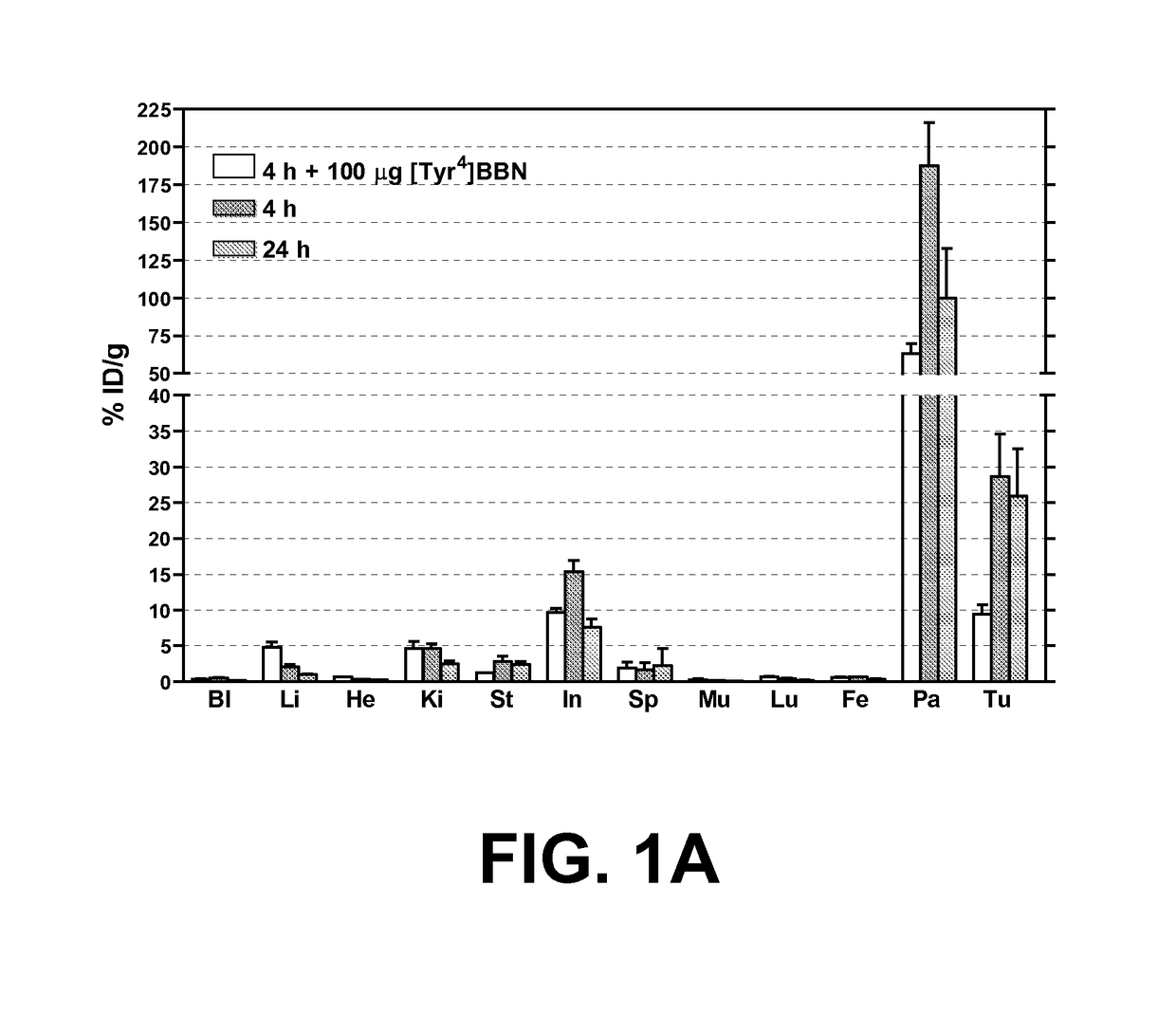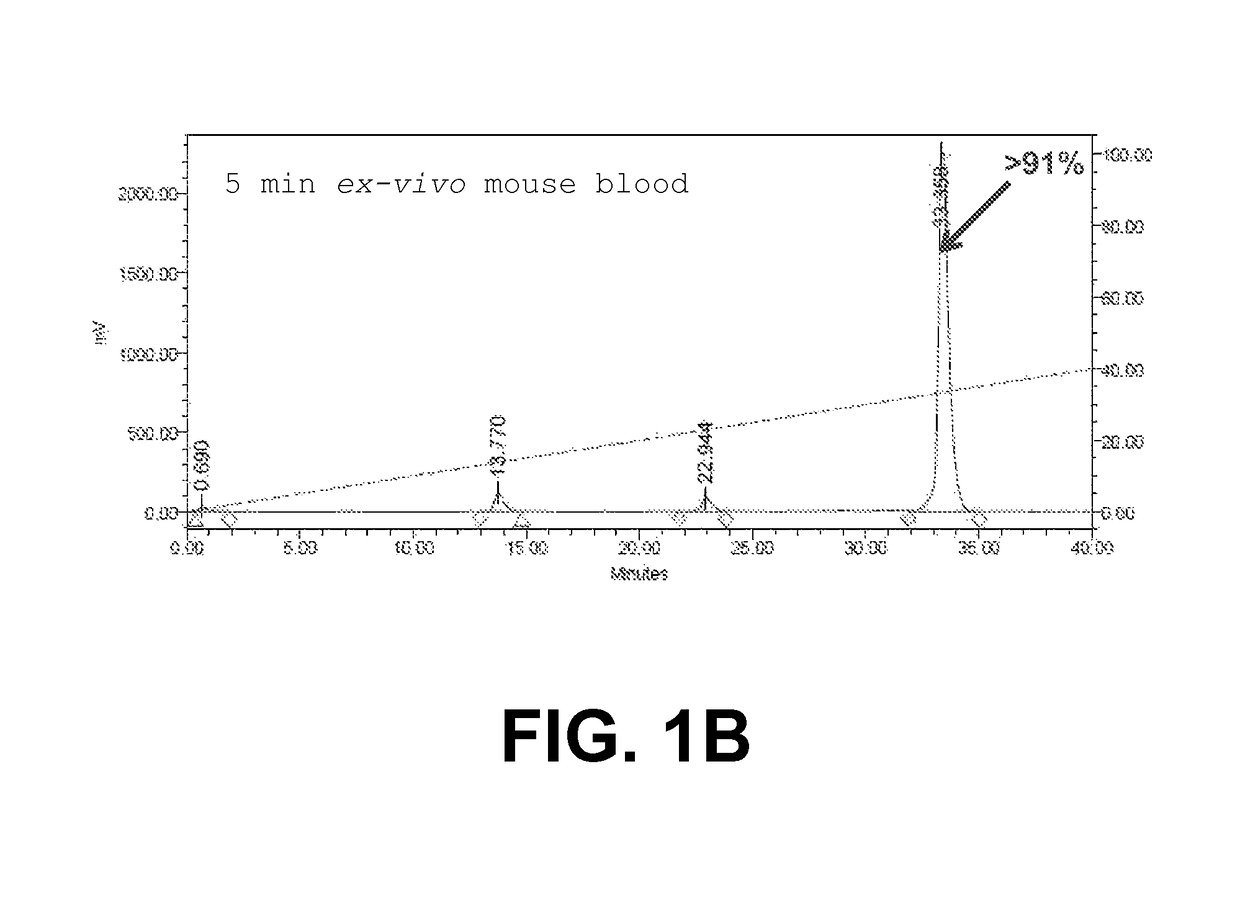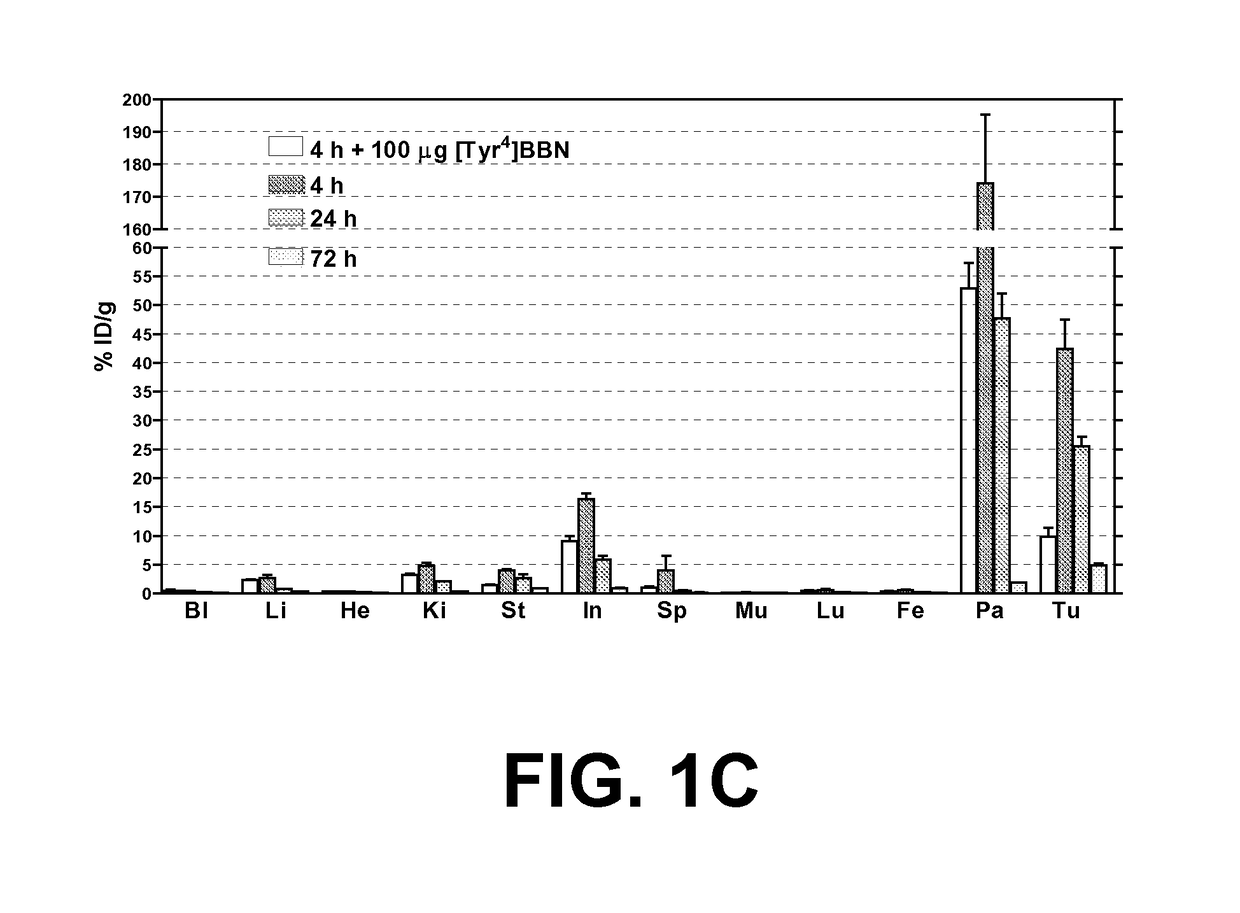Radiolabeled GRPR-antagonists for diagnostic imaging and treatment of GRPR-positive cancer
a technology of diagnostic imaging and anti-cancer, which is applied in the direction of sexual disorder, isotope introduction to peptides/proteins, drug compositions, etc., can solve the problems of eliciting adverse effects, limiting the thorough clinical validation and/or eventual commercial exploitation, and being unsuitable for pet or radionuclide therapy applications
- Summary
- Abstract
- Description
- Claims
- Application Information
AI Technical Summary
Benefits of technology
Problems solved by technology
Method used
Image
Examples
example
Introduction
[0108]Compounds of the invention were made and tested as described below. The following disclosed embodiments are merely representative of the invention which may be embodied in various forms. Thus, specific structural, functional, and procedural details disclosed in the following examples are not to be interpreted as limiting.
Materials and Methods
Radiolabeling and QC
Labeling with 111In
[0109]Indium (In-111) chloride in 50 mM HCl was purchased from Mallinckrodt Medical B. V., Petten, The Netherlands, at an activity concentration of 10-20 mCi / mL. In general, DOTA-peptide conjugates of the present invention were radiolabeled with Indium-111 at specific activities of 0.1-0.2 mCi In-111 / nmol DOTA-peptide conjugate. Briefly, 3-15 nmol of DOTA-peptide conjugate dissolved in water was mixed with 2.5-12.5 μL of 1.0 M pH 4.6 sodium acetate buffer, 1-5 μL of 0.1 M sodium ascorbate in water and 30-150 μL of 111InCl3 (0.3-3.0 mCi). The radiolabeling reaction mixture was incubated in ...
PUM
| Property | Measurement | Unit |
|---|---|---|
| pH | aaaaa | aaaaa |
| pH | aaaaa | aaaaa |
| pH | aaaaa | aaaaa |
Abstract
Description
Claims
Application Information
 Login to View More
Login to View More - R&D
- Intellectual Property
- Life Sciences
- Materials
- Tech Scout
- Unparalleled Data Quality
- Higher Quality Content
- 60% Fewer Hallucinations
Browse by: Latest US Patents, China's latest patents, Technical Efficacy Thesaurus, Application Domain, Technology Topic, Popular Technical Reports.
© 2025 PatSnap. All rights reserved.Legal|Privacy policy|Modern Slavery Act Transparency Statement|Sitemap|About US| Contact US: help@patsnap.com



